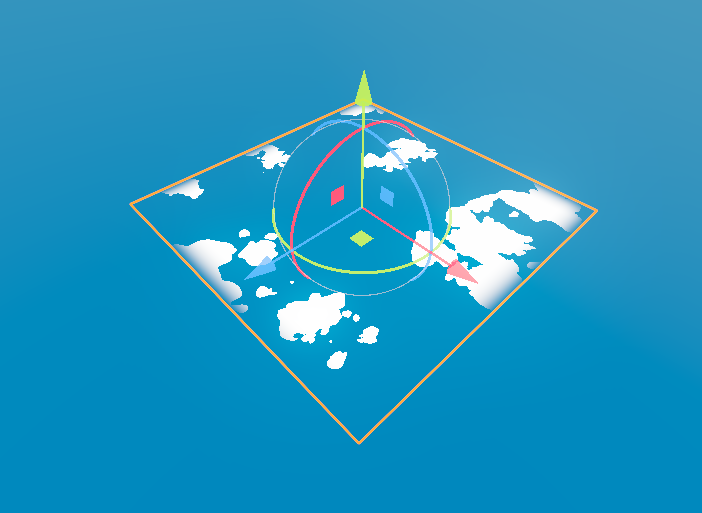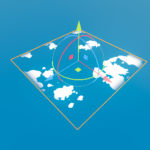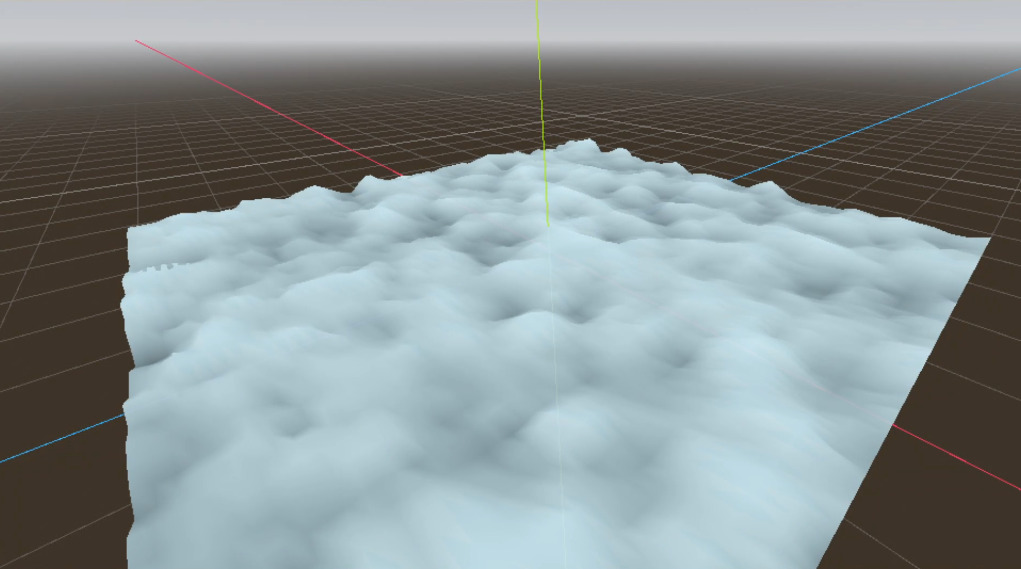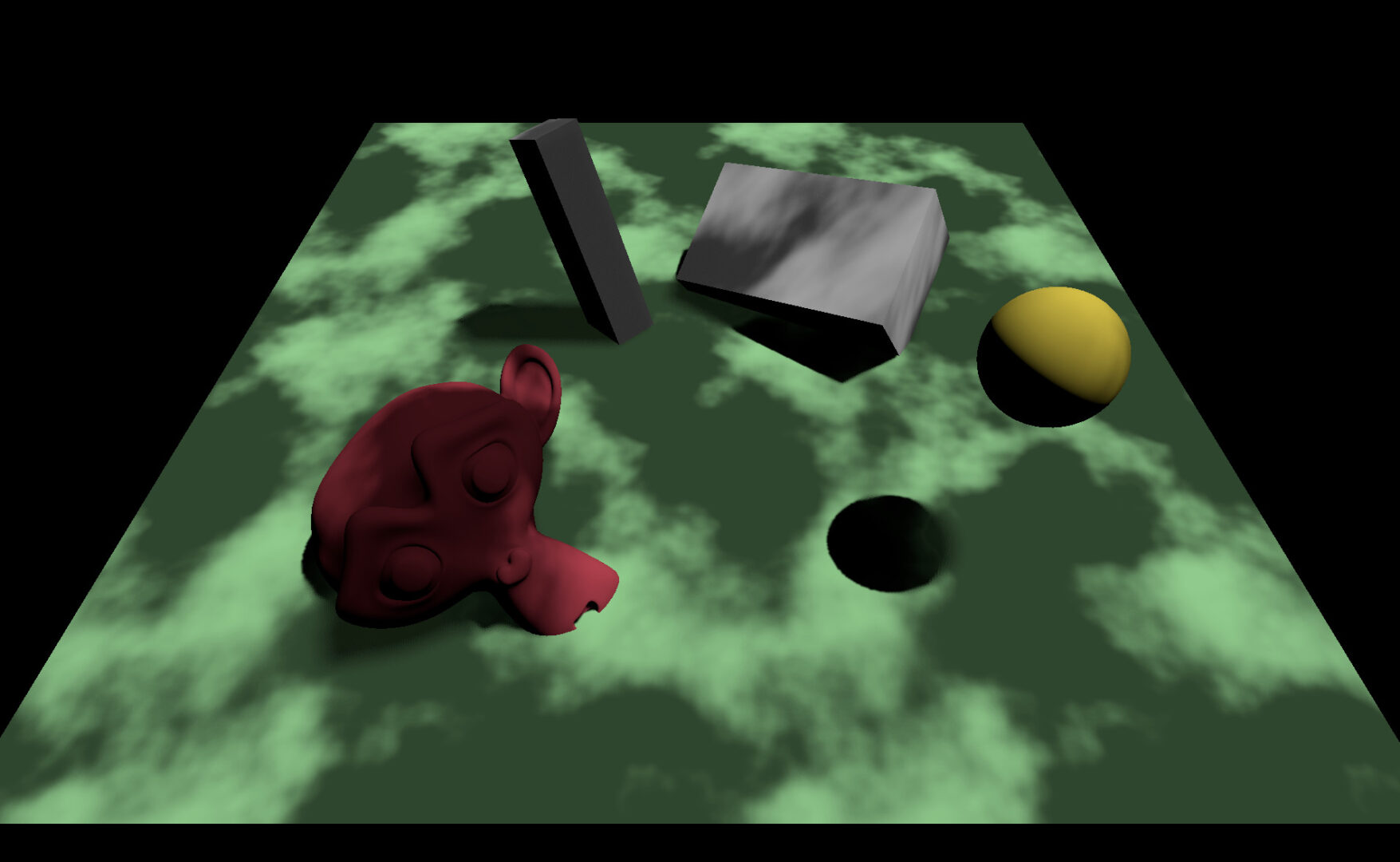Stylized Cloud as texture
Physical cloud plane for Godot 4.3
Copied from Stylized Cloudy Sky from 900fog
How to set it up: Use it as a mesh instance or any 3D spatial nodes type, create a mesh, create a new ShaderMaterial, copy and paste my code into the material, and enjoy!
The “Use Custom Texture” uses custom texture as cloud, this is more customized, but I cannot get it seamlessly when working with texture, sorry! Also, this setting will ignore every other setting besides “Noise texture”
Set “Clouds Fuzziness” to 0 if you want the same cloud result as mine.
Use with caution! My PC blew up after trying it (integrated graphic, sorry)
Shader code
shader_type spatial;
render_mode cull_disabled, blend_mix, unshaded;
uniform sampler2D noise_texture : hint_default_white;
uniform float use_custom_texture : hint_range(0.0, 1.0) = 0.0;
uniform float clouds_speed : hint_range(0.0, 20.0, 0.01) = 2.0;
uniform float clouds_direction : hint_range(-0.5, 0.5, 0.0) = 0.2;
uniform float clouds_scale : hint_range(0.0, 4.0, 0.01) = 1.0;
uniform float clouds_cutoff : hint_range(0.0, 1.0, 0.01) = 0.3;
uniform float clouds_fuzziness : hint_range(0.0, 2.0, 0.01) = 0.5;
uniform vec3 clouds_color : source_color = vec3(1.0, 1.0, 1.0);
uniform float edge_fade : hint_range(0.0, 1.0, 0.01) = 0.15;
// Noise generation functions
const int PRIME_X = 501125321;
const int PRIME_Y = 1136930381;
float lerp(float a, float b, float t) {
return a + t * (b - a);
}
float cubic_lerp(float a, float b, float c, float d, float t) {
float p = d - c - (a - b);
return t * t * t * p + t * t * (a - b - p) + t * (c - a) + b;
}
float ping_pong(float t) {
t -= trunc(t * 0.5) * 2.0;
return t < 1.0 ? t : 2.0 - t;
}
int hash(int seed, int x_primed, int y_primed) {
return (seed ^ x_primed ^ y_primed) * 0x27d4eb2d;
}
float val_coord(int seed, int x_primed, int y_primed) {
int hash = hash(seed, x_primed, y_primed);
hash *= hash;
hash ^= hash << 19;
return float(hash) * (1.0 / 2147483648.0);
}
float single_value_cubic(int seed, float x, float y) {
int x1 = int(floor(x));
int y1 = int(floor(y));
float xs = x - float(x1);
float ys = y - float(y1);
x1 *= PRIME_X;
y1 *= PRIME_Y;
int x0 = x1 - PRIME_X;
int y0 = y1 - PRIME_Y;
int x2 = x1 + PRIME_X;
int y2 = y1 + PRIME_Y;
int x3 = x1 + (PRIME_X << 1);
int y3 = y1 + (PRIME_Y << 1);
return cubic_lerp(
cubic_lerp(val_coord(seed, x0, y0), val_coord(seed, x1, y0), val_coord(seed, x2, y0), val_coord(seed, x3, y0), xs),
cubic_lerp(val_coord(seed, x0, y1), val_coord(seed, x1, y1), val_coord(seed, x2, y1), val_coord(seed, x3, y1), xs),
cubic_lerp(val_coord(seed, x0, y2), val_coord(seed, x1, y2), val_coord(seed, x2, y2), val_coord(seed, x3, y2), xs),
cubic_lerp(val_coord(seed, x0, y3), val_coord(seed, x1, y3), val_coord(seed, x2, y3), val_coord(seed, x3, y3), xs),
ys) * (1.0 / (1.5 * 1.5));
}
const float FRACTAL_BOUNDING = 1.0 / 1.75;
const int OCTAVES = 5;
const float PING_PONG_STRENGTH = 2.0;
const float WEIGHTED_STRENGTH = 0.0;
const float GAIN = 0.5;
const float LACUNARITY = 2.0;
float gen_fractal_ping_pong(vec2 pos, int seed, float frequency) {
float x = pos.x * frequency;
float y = pos.y * frequency;
float sum = 0.0;
float amp = FRACTAL_BOUNDING;
for (int i = 0; i < OCTAVES; i++) {
float noise = ping_pong((single_value_cubic(seed++, x, y) + 1.0) * PING_PONG_STRENGTH);
sum += (noise - 0.5) * 2.0 * amp;
amp *= lerp(1.0, noise, WEIGHTED_STRENGTH);
x *= LACUNARITY;
y *= LACUNARITY;
amp *= GAIN;
}
return sum * 0.5 + 0.5;
}
float calculate_edge_fade(vec2 uv) {
vec2 fade = smoothstep(vec2(0.0), vec2(edge_fade), uv) *
smoothstep(vec2(0.0), vec2(edge_fade), 1.0 - uv);
return fade.x * fade.y;
}
void fragment() {
// Calculate UV coordinates for cloud movement
vec2 base_uv = UV * clouds_scale;
float time = TIME * clouds_speed * 0.01;
float sin_x = sin(clouds_direction * PI * 2.0);
float cos_y = cos(clouds_direction * PI * 2.0);
vec2 clouds_movement = vec2(sin_x, cos_y) * time;
float cloud_density;
if (use_custom_texture > 0.5) {
// Use custom texture
cloud_density = texture(noise_texture, base_uv + clouds_movement).r;
} else {
// Generate procedural cloud noise
float noise_top = gen_fractal_ping_pong((base_uv + clouds_movement), 0, 0.5);
float noise_middle = gen_fractal_ping_pong((base_uv + clouds_movement * 0.89), 1, 0.75);
float noise_bottom = gen_fractal_ping_pong((base_uv + clouds_movement * 0.79), 2, 1.0);
// Combine noise layers
float noise_bottom_smooth = smoothstep(clouds_cutoff, clouds_cutoff + clouds_fuzziness, noise_bottom);
float noise_middle_smooth = smoothstep(clouds_cutoff, clouds_cutoff + clouds_fuzziness, noise_middle + noise_bottom_smooth * 0.2) * 1.1;
float noise_top_smooth = smoothstep(clouds_cutoff, clouds_cutoff + clouds_fuzziness, noise_top + noise_middle_smooth * 0.4) * 1.2;
cloud_density = clamp(noise_top_smooth + noise_middle_smooth + noise_bottom_smooth, 0.0, 1.0);
}
// Calculate edge fade
float edge_alpha = calculate_edge_fade(UV);
// Apply cloud color and transparency with edge fade
ALBEDO = clouds_color;
ALPHA = cloud_density * edge_alpha;
}









This is my first shaders, of course it will be some major issues, and if it really is, I’m sorry!